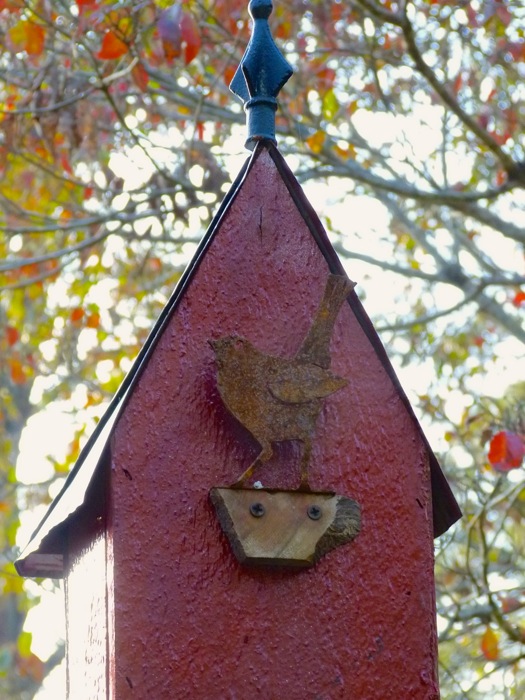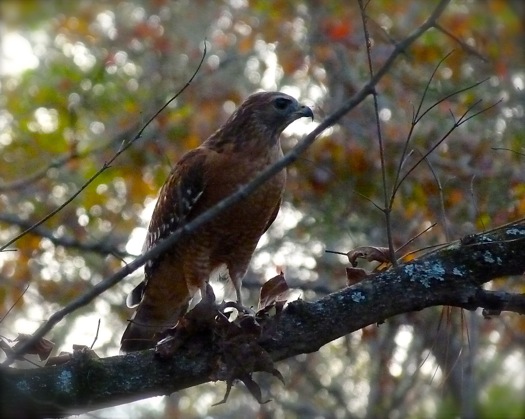Images of Early Spring 2018
 Friday, March 9, 2018 at 9:15PM
Friday, March 9, 2018 at 9:15PM Many trees are still bare, and some oaks even now hold stubbornly to dead fall leaves; but those dried holdovers from autumn are destined to fall soon as new leaves push them out. And the birds are busy, singing and cleaning and preening to make themselves presentable and generally creating a ruckus as they announce: Spring has arrived!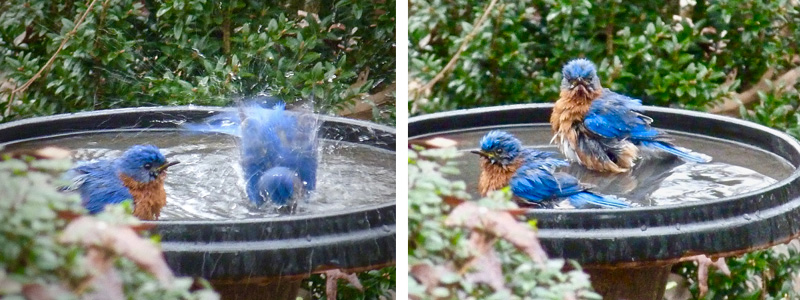 I am not sure these male bluebirds were enjoying their spring bath, but it was nescessary!By the way, I recently heard something I had never heard before: a Red-shouldered Hawk cooing! These hawks have the most unpleasant shrill call, but one day I witnessed a male and female hawk rubbing beaks (Kissing must be a universal sign of affection!), and the female was making the softest cooing sound. I bet her tone will change when she is nest bound and demanding food!
I am not sure these male bluebirds were enjoying their spring bath, but it was nescessary!By the way, I recently heard something I had never heard before: a Red-shouldered Hawk cooing! These hawks have the most unpleasant shrill call, but one day I witnessed a male and female hawk rubbing beaks (Kissing must be a universal sign of affection!), and the female was making the softest cooing sound. I bet her tone will change when she is nest bound and demanding food!
Every day brings more bright green, pink, purple, and yellow colors as fresh growth sprouts throughout the garden. I am in a flurry of activity, trying to get weeds pulled, new plants put into the ground, and other plants pruned or transplanted to new places.
But never too busy to take photos! Recording images of the garden is one of my favorite pastimes, and by looking closely at pictures I have taken, I can appreciate their beauty, as well as spot problems in design or identify problems with individual plants. (For example, I will sometimes catch white flies or aphids in photos that my naked eye missed. Or I will see that a certain shrub really looks terrible in its present location or that it needs a companion plant to bring out its best features.) So here are some recent photos of spring blooms in my garden. I hope you enjoy!
Early daffodils in the front garden:
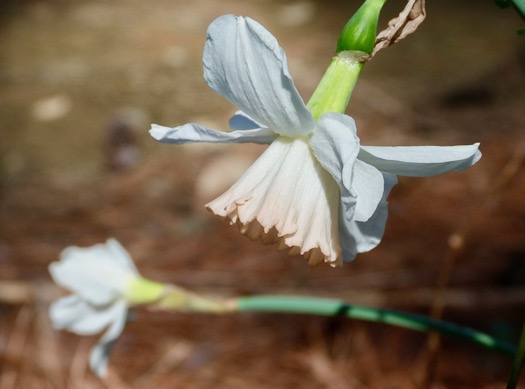
Flowering Quince. Sometimes people ask me if these plants produce fruit. The answer is yes! But very bitter and best reserved for quince jelly: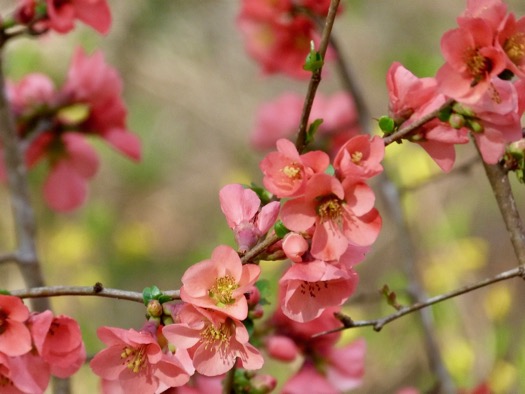

Hellebores:

Assorted Camellias:
Edgeworthia; I often say the blooms remind me of ballet tutus:

Cercis canadensis, or Eastern Redbuds are in full bloom. Despite the name, mine bloom purple:
Everyday I see new blooms: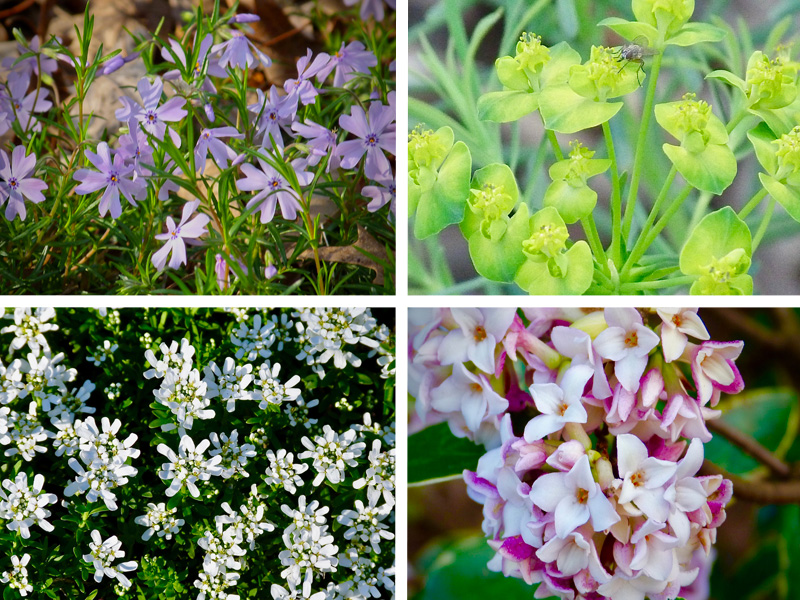 Clockwise from top left: Phlox subulata, commonly called Thrift; Unidentified variety of Euphorbia - a passalong plant from another gardener; Viburnum burkwoodii, a very fragrant species; Iberis sempervirens, also called Candytuft, a low-growing evergreen perennial that may be used a ground cover.
Clockwise from top left: Phlox subulata, commonly called Thrift; Unidentified variety of Euphorbia - a passalong plant from another gardener; Viburnum burkwoodii, a very fragrant species; Iberis sempervirens, also called Candytuft, a low-growing evergreen perennial that may be used a ground cover.
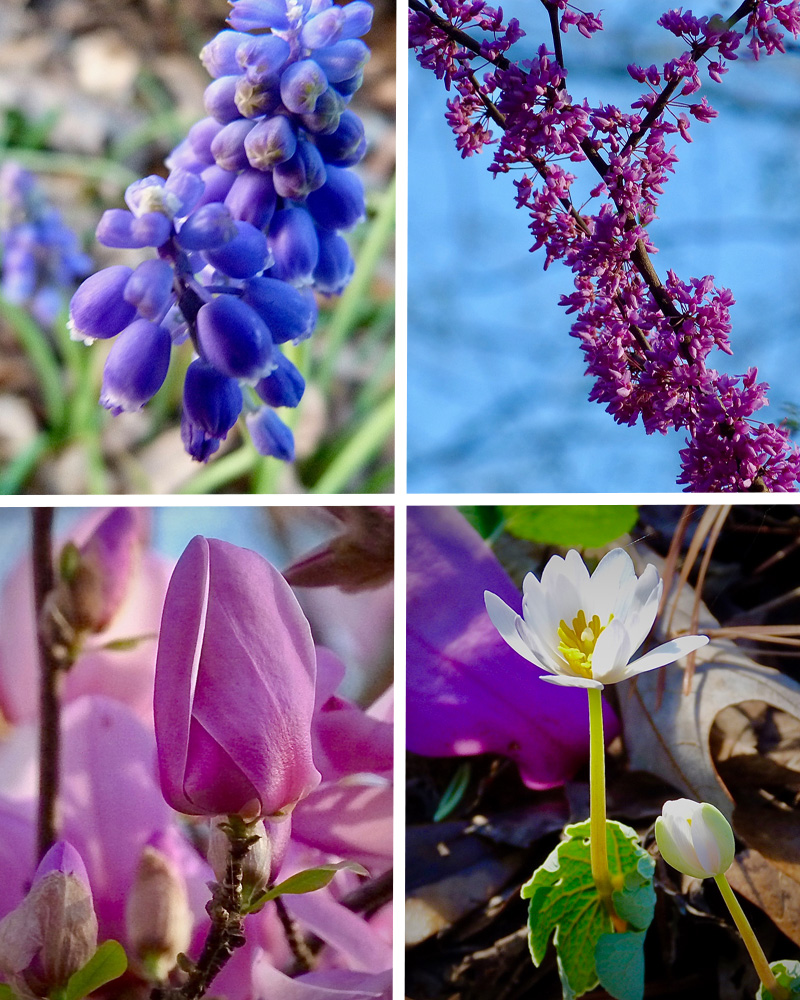 Clockwise from top left: Grape Hyacinth; Redbud blooms; Sanguinaria canadensis or Bloodroot; Magnolia 'Jane.'Many of these early spring blooms will fade as others come to life. I walk through the garden to see how plants have come through the winter. Some will have flourished; others I may never see again. Every spring day is an adventure!
Clockwise from top left: Grape Hyacinth; Redbud blooms; Sanguinaria canadensis or Bloodroot; Magnolia 'Jane.'Many of these early spring blooms will fade as others come to life. I walk through the garden to see how plants have come through the winter. Some will have flourished; others I may never see again. Every spring day is an adventure!
 bluebird,
bluebird,  early spring,
early spring,  spring colors,
spring colors,  spring flowers in
spring flowers in  clouds and sky,
clouds and sky,  spring
spring 